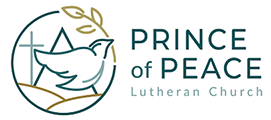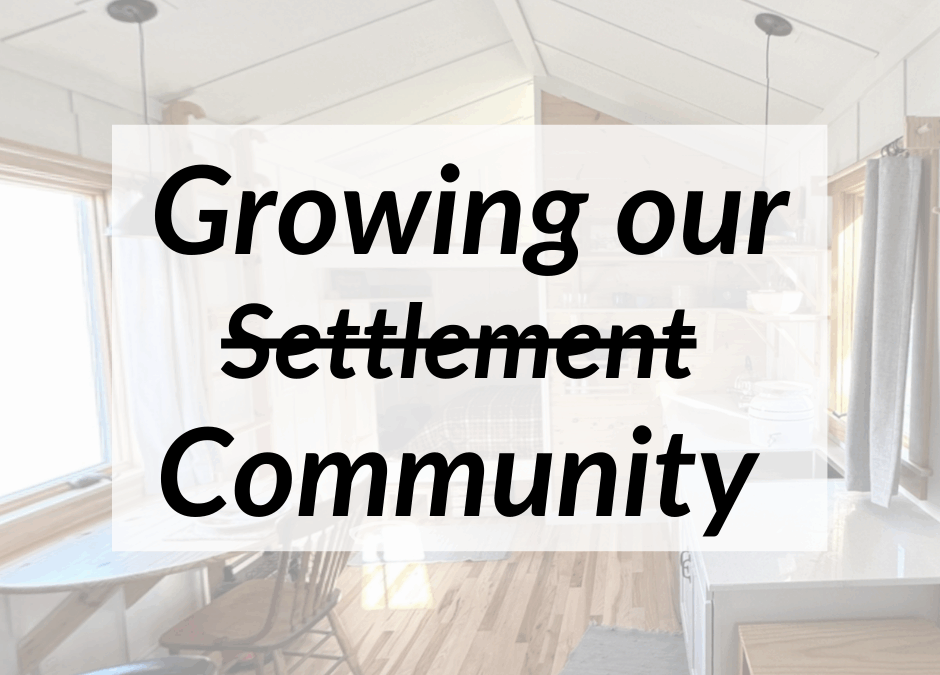By Michael Stetzler
At our Semi-Annual meeting in June, we voted to move ahead with expansion of our sacred settlement, provided that we could satisfy our concerns about funding and staffing. As a member of the team charged with exploring solutions to these concerns, I’d like to offer my take on where we go from here.
“Begin with the end in mind” is one of Steven Covey’s “seven habits of highly effective people” in his book with that name. Although that book has been around for a while, I still think it is good advice. So how do we think about and visualize what we want to do? That’s the necessary first step in figuring out how to staff and fund our growth.
Back in the fall of 2020 when we took the first steps towards becoming a sacred settlement, the vision was simple: get Valerie a place to spend the winter. Settled, which had just launched a settlement at Mosaic Christian Community in St. Paul, offered a way to do that. They offered us a tiny home for Valerie, but they also offered a vision: full community.
- What is full community? The model developed by Settled has five elements.
- Intentional neighbor
- Permanent homes
- Cultivated places
- Purposeful work
- Supportive friends
Each of these elements is embodied in our Prince of Peace settlement. As we look toward expansion, we can envision an “end in mind” for each of these elements. We can then set goals, identify tasks and assign staff responsibility for each. Some of that work has begun, but we soon realized that the model doesn’t allow us to see the whole picture of full community.
Back to the question: What is full community? The model put forth by Settled is backed by solid research and has been used successfully here and elsewhere. But I would like to explore a broader use of the term so that we can apply it to our entire community, including the settlement. So I cheated. Here is how Chat GPT responded:
A full community is one in which all the key elements of community are strongly present and actively working together — not just physically existing, but being lived out in daily relationships and interactions.
In other words, it’s the whole package:
Core Features of Sacred Settlement Prince of Peace
- Complete Membership
- Everyone feels accepted, safe, and included.
- Clear identity markers and shared symbols help members feel “this is my place.”
- Healthy Influence
- Members have a real voice in shaping decisions. The group sets fair norms and guides behavior while still respecting individuality.
- Needs Are Met
- Practical resources (like information, skills, and mutual help) are readily exchanged.Emotional needs (like recognition, encouragement, and belonging) are consistently fulfilled.
- Strong Emotional Bonds
- There’s a rich history of shared experiences — both struggles and celebrations.Traditions, rituals, and stories deepen the emotional glue that holds members together.
Chat GPT is not a real authority, but the response does derive from the compiled writing of a lot of experts. Maybe we can use these results, along with the Settled model of full community, as a discussion guide for future planning.
As I imagine the end in mind – an expanded settlement within a full Prince of Peace community -I think of how this description of full community can help us define tasks and responsibilities that will get us there.
It also provides a framework for remembering and celebrating our past. Prince of Peace has always been a community moving toward full community. Bringing our homeless neighbors into our community has moved us toward that end, by calling us to be in relationship as Jesus commanded. As with all of God’s creation, we are in the process of becoming.

